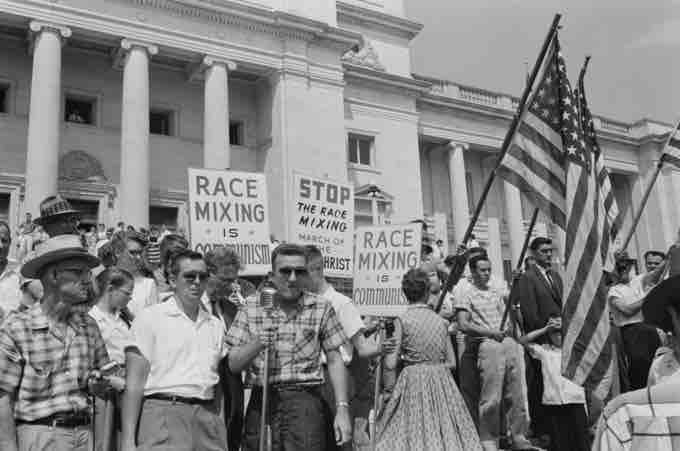Litigating for Equality after World War II
The period after World War II saw a great expansion in civil rights. This was achieved through a diversity of tactics including ongoing litigation.
The best know case from this period is Brown v. Board of Education (1954), a Supreme Court case in which justices unanimously decided to reverse the principle of separate but equal. The decision led to the legal integration of public schools.
Brown v. Board of Education was a collection of cases that had been filed on the issue of school segregation from Delaware, Kansas, South Carolina and Washington DC. Each case was brought forward through NAACP local chapters. In each case except for Delaware, local courts had upheld the legality of segregation. The states represented a diversity of situations ranging from required school segregation to optional school segregation.
Segregation as Unconstitutional
Rather than focusing on whether or not segregated schools were equal, the Supreme Court ruling focused on the question of whether a doctrine of separate could ever be said to be equal. The judges' ruling hinged on an interpretation that took separate as unconstitutional particularly because "Segregation of white and colored children in public schools has a detrimental effect upon the colored children. The impact is greater when it has the sanction of the law, for the policy of separating the races is usually interpreted as denoting the inferiority of the negro group. A sense of inferiority affects the motivation of a child to learn. "
School Integration and Resistance
Brown v. Board of Education paved the way for integration in schools and other spheres of life, but not everyone supported this decision. Many white people in southern states protested integration, and legislators thought up creative ways to get around the ruling. This case was just one step on the road to providing full civil liberties for all people living in the United States.

Anti-Integration Protest
A 1959 rally in Little Rock AK protests the integration of the high school.